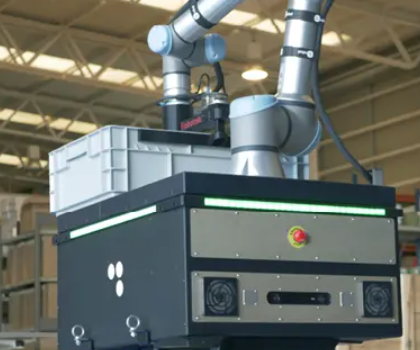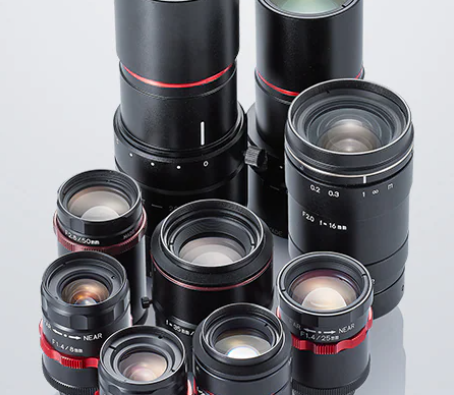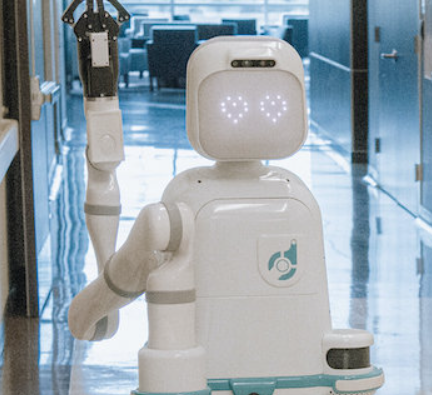
The aerospace industry has witnessed a transformative shift with the integration of mobile robots, enhancing precision and operational efficiency. Initially seen in automotive and electronics manufacturing, robotics is now playing a pivotal role in the production of high-precision aeronautical components. With the growing demand for advanced materials like lightweight alloys and composites, the need for automation in aerospace manufacturing is more pressing than ever. Mobile robots ensure repeatability, precision, and regulatory compliance, critical factors for aircraft safety and performance.
Mobile robots, particularly Autonomous Mobile Robots (AMRs), are now indispensable for improving both production efficiency and the adherence to stringent quality standards in aerospace manufacturing. By optimizing complex processes such as inspections and assembly, these robots contribute significantly to the advancement of the industry.
Key Tasks Mobile Robots Perform in Aerospace
Mobile robots in the aerospace sector handle a wide range of tasks, each designed to enhance precision, meet regulatory requirements, and ensure safety. These tasks extend far beyond logistics and material handling, addressing critical operations such as dimensional inspections, surface treatments, and structural assembly.
- Automated Dimensional Inspection
Mobile robots equipped with advanced sensors are capable of performing highly accurate dimensional inspections of aerospace components. For example, the RB-KAIROS+ mobile manipulator robot is used in aerospace plants to measure the Horizontal Tail Plane (HTP) skins, ensuring compliance with aerospace standards and providing full traceability of the process. - Surface Treatment Applications
Some mobile robots are designed to perform tasks like sanding, polishing, and painting parts. These robots not only enhance the quality of surface finishes but also reduce human exposure to hazardous environments, ensuring both safety and consistency. - Component Handling and Assembly
By integrating mobility with robotic arms, mobile robots can handle and assemble large, complex parts. This combination streamlines production processes, reducing human error and optimizing assembly line performance. - Visual Inspections and Defect Detection
Mobile robots with cameras and machine vision systems are adept at conducting visual inspections to identify defects such as cracks or irregularities in components. Early detection of such issues helps prevent costly production errors. - Autonomous Transportation
AMRs are also used to transport materials, tools, and parts across different workstations within aerospace manufacturing plants. This automated transportation reduces manual vehicle traffic, streamlines logistics, and enhances safety in the workplace.
Success Story: The RB-KAIROS+ in Aerospace Manufacturing
A prime example of mobile robotics in action is the RB-KAIROS+ Autonomous Mobile Manipulator, which plays a crucial role in quality inspections within aerospace manufacturing. This mobile robot automates tasks that were traditionally done manually, including the measurement of stringers, flanges, and skin thickness in HTP components.
Thanks to the RB-KAIROS+, these inspections are now more efficient, offering repeatability and consistency. The robot autonomously navigates around complex structures, taking precise measurements with minimal human intervention. It achieves this by utilizing 2D and 3D environmental scanning to localize itself, allowing it to adapt to the plant layout without requiring any facility modifications.
How the RB-KAIROS+ Operates
The RB-KAIROS+ is built to offer high levels of adaptability and autonomy, essential for aerospace manufacturing environments. Here’s how it works:
- Autonomous Navigation: The robot uses 2D and 3D scanning technologies to navigate the plant floor without needing floor markings or predefined paths. This flexibility simplifies deployment and eliminates the need for major modifications to the existing infrastructure.
- Precision Referencing: Before conducting any measurements, the robot uses a contact probe to accurately locate the reference point on the part.
- Data Integration: All the data collected during inspections is processed and uploaded to local and cloud-based information systems. This integration ensures full traceability and enables detailed analysis for future improvements.
Benefits of AMRs in Aerospace Manufacturing
The use of mobile robots like the RB-KAIROS+ offers several advantages to aerospace manufacturers, including:
- Enhanced Process Consistency
Manual inspections are prone to human error, leading to inconsistencies. Automating these tasks with the RB-KAIROS+ improves process reliability and ensures operational consistency, even during continuous operation. - Time and Resource Efficiency
Manual measurements can be time-consuming, especially when hundreds of measurements are required. AMRs can perform these tasks faster and without fatigue, freeing up human workers for more complex, value-added tasks. - Seamless Integration
One of the biggest hurdles in industrial automation is integrating new systems into existing environments. The RB-KAIROS+ was designed to integrate smoothly into established manufacturing facilities without requiring major changes, thus minimizing additional costs. - Safety and Collaborative Operations
The RB-KAIROS+ is a collaborative robot that can safely work alongside human operators without needing restricted zones. Equipped with safety scanners, it halts operations if it detects any intrusion, ensuring a safe work environment. - Data-Driven Quality Control
By automating the collection and analysis of inspection data, the RB-KAIROS+ enables detailed traceability, automatic report generation, and predictive maintenance. This data-driven approach ensures that quality control is both precise and efficient.
The Future of Mobile Robots in Aerospace
Aerospace companies have already begun integrating mobile robotics into their manufacturing processes, and this trend is expected to grow in the coming years. Mobile robots are becoming an integral part of tasks like inspection, assembly, and predictive maintenance, as they provide efficiency, accuracy, and safety.
Looking ahead, the integration of advanced technologies such as artificial intelligence and machine learning will further enhance the capabilities of mobile robots. These technologies will enable robots to not only detect but also diagnose errors, predict failures, and dynamically optimize their processes based on real-time data from the production floor.
Mobile robots are setting the stage for a new era in aerospace manufacturing—one where automation, precision, and efficiency are paramount. As technology continues to evolve, mobile robots will remain at the forefront of innovation, helping aerospace companies meet the demands of the future.












